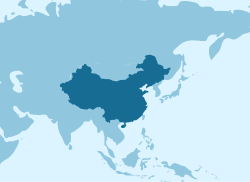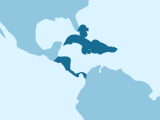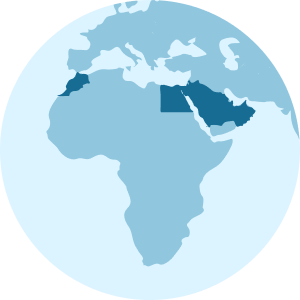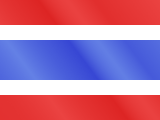65 Countries That Offer Digital Nomad Visas in 2025: The Ultimate List
Discover everything you need to know about the 65 digital nomad visa countries in 2025: requirements, benefits, and potential disadvantages.
Would you like to work from anywhere in the world? Is telecommuting part of your lifestyle? If so, you’ll be interested in exploring the growing list of digital nomad visa countries—65 destinations that offer temporary work permits specifically for remote workers. This means that you are offered a temporary work permit to reside and work in their country without the complications of applying for a traditional visa.
Visualize this scenario: you start your workday facing the crystal clear waters of Malta or enjoying a sunset in the mountains of Georgia. What once seemed unattainable, today is a reality for all those who telework.
In this post we tell you which countries with digital nomad visa are currently offering this service and what steps you must follow to get this work permit and take your office to your favorite destination.
Times have changed and being locked up in an office within four walls is no longer the norm. More and more people are looking for alternatives that allow them to combine their work with exploring the world. Traditional office life has been left behind, giving way to flexibility and the possibility of working from any corner of the planet. Are you ready for adventure?

Plans that may interest you
What is a digital nomad visa?
A digital nomad visa is a temporary residence permit that allows people who work remotely to live in other countries while continuing to perform their work duties without the need to obtain a traditional work visa.
These permits are specifically designed for those who can perform their work online as freelancers, employees or entrepreneurs and want to take advantage of the flexibility of their employment to live in other destinations. If you’re not yet a digital nomad but dream of becoming one, don’t miss our post: Complete Guide on How to Become a Digital Nomad.
Currently, several countries with digital nomad visas offer this opportunity, providing the possibility to reside in their territories for periods ranging from six months to two years, depending on local regulations.

Which countries offer visas for digital nomads?
In an increasingly connected world, the figure of the digital nomad has become an accessible reality for many. In this section we share with you a list of countries or destinations with visas for digital nomads, highlighting their characteristics, advantages and disadvantages, thus facilitating the decision to choose the ideal destination for your next adventure.
| Country | Length of stay | Visa application fee | Applicant’s minimum income |
| Germany | 3 months to 3 years | 100 EUR + 80 EUR | Not specified (9,000 EUR/year – Unofficial) |
| Albania | 1 year (renewable) | Between 25 and 100 USD USD (Same as country of origin) | 315 USD/month – 9,800 USD/year |
| Andorra | 2 years (renewable) | 2,500 EUR + 500 EUR | 4,128 EUR/month |
| Anguilla | 1 year (non-renewable) | 2,000 USD alone – 3,000 family | Not specified |
| Antigua and Barbuda | 2 years (renewable) | 1,500 USD alone – 2,000 couple – 3,000 family | 50,000 USD/year |
| Argentina | 6 months (renewable) | 120 USD + 80 USD | Not specified |
| Armenia | 1 year (renewable) | 3,000 MAD (7.60 USD) + 270 USD | Unspecified |
| Aruba | 3 months (renewable) | 20 USD | Not specified |
| Bahamas | 1 year (renewable) | 25 BSD (25 USD) + 1,000 BSD (1,000 USD) | Not specified |
| Barbados | 1 year (renewable) | 2,000 USD alone – 3,000 family | 50,000 USD/year |
| Bermuda | 1 year (renewable) | 275 USD | Not specified |
| Belize | 6 months (renewable) | 500 USD | 75,000 USD/year alone – 100,000 USD/year couple |
| Brazil | 1 year (renewable) | Between 110 and 290 USD | 1,500 USD/month |
| Chile | 1 year (renewable) | Free up to 2,620 USD (Depends on country) | Not specified |
| Cape Verde | 6 months (renewable) | 20 EUR + 34 EUR | 1,500 EUR/month – Last 6 months |
| Canada | 6 months (renewable) | Not applicable | Not specified |
| Colombia | 2 years (renewable) | 54 USD + 177 USD | 3,900,000 COP/month (870 USD) |
| South Korea | 1 year (renewable) | 45 USD | 85.000.000 KRW (60,900 USD)/year |
| Costa Rica | 1 year (renewable) | 100 USD | 3,000 USD/month |
| Croatia | 1 year (non-renewable) | 55.74 EUR + 93 EUR + 41.14 EUR | 2,870 EUR/month |
| Curaçao | 6 months (renewable) | 535 ANG (300 USD) | Unspecified |
| Cyprus | 1 year (renewable) | 70 EUR + 70 EUR | 3,500 EUR (Tax free) |
| Dominica | 18 months (non-renewable) | 100 USD + 800 USD alone – 1,200 USD family | 50,000 USD/year |
| Ecuador | 1 year (renewable) | 50 USD + 400 USD | 1,380 USD/month |
| El Salvador | 2 years (renewable) | 2,825 USD (Unofficial) | 1,460 USD/month |
| United Arab Emirates | 1 year (non-renewable) | 101 USD – 334 USD | 3,500 USD/month |
| Spain | 1 year (renewable) | 85 USD | 2,646 EUR/month |
| Estonia | 1 year (non-renewable) | 100 EUR | 4,500 EUR/month (Tax free) |
| Finland | 6 months (renewable) | 416 USD | 1,283 USD/month |
| France | 1 year (non-renewable) | 99 EUR | Not specified |
| Georgia | 1 year (extendable) | Free | 2,000 USD/month |
| Greece | 1 year (renewable) | 75 EUR + 150 EUR (administrative fee) | 3,500 EUR/month alone 4,200 EUR couple |
| Grenada | 1 year (renewable) | 1,500 USD alone – 2,000 USD family | 37,000 USD/year |
| Hungary | 1 year (renewable) | 110 EUR | 3,000 EUR/month |
| Iceland | 6 months (non-renewable) | 12,200 ISK ( 89 USD) | 1,000,000 ISK/month (7,250 USD) |
| Cayman Islands | 2 years (renewable) | 1,469 USD + 7% (If paid by credit card) | 100,000 USD/year alone – 150,000 USD couple |
| India | 1 to 5 years (non-renewable) | 40 to 80 USD + 2.5% (bank charges) | Not specified |
| Indonesia | 1 year (renewable) | 150 USD + 2,700,000 IDR (170 USD) | 60,000 USD/year |
| Italy | 1 year (renewable) | 128 USD | 24,789 EUR/year |
| Japan | 6 months (non-renewable) | 22 USD | 10.000.000 JPY/year (64,900 USD) |
| Kazakhstan | 1 year (renewable) | 60 USD | 3,000 USD/month |
| Kenya | Undefined | Undefined | 55,000 USD/year |
| Latvia | 1 year (renewable) | 60 EUR | 3,843 EUR/month – Last 6 months |
| Malaysia | 1 year (renewable) | 1,000 MYR (223 USD) alone – 500 (112 USD) dependent | 24,000 USD/year (Tech) – 60,000 USD/year (Non tech) |
| Malta | 1 year (renewable) | 300 EUR + 27.50 EUR (residence card) | 42,000 EUR/year |
| Mauritius | 1 year (renewable) | Free of charge | 1,500 USD/month |
| Mexico | 1 year (renewable) | 53 USD | 74,679 MXN/month (3,664 USD) (Tax-free) |
| Montenegro | 2 years (renewable) | 67 EUR | Not specified (1,350 EUR/month – Unofficial) |
| Montserrat | 1 year (renewable) | 500 USD alone – 750 USD family | 70,000 USD/year |
| Namibia | 1 year (non-renewable) | 124 USD | 2,000 USD/month alone – 3,000 USD couple |
| Norway | 2 years (renewable) | 600 EUR + 25 EUR | 35,719 EUR/year |
| Panama | 9 months (renewable) | 250 USD | 36,000 PAB/year (36,000 USD) |
| Paraguay | 2 years (renewable) | 2,690,675 GS (344 USD) + 215,254 GS (28 USD) (Certificate of Establishment) | Unspecified |
| Peru | 1 year (renewable) | Not defined | Not defined |
| Portugal | 1 year (renewable) | 180 EUR + 320 EUR | 3,280 EUR/month |
| Czech Republic | 1 year (renewable) | 105 USD | 65,950 CZK/month (2,750 USD) |
| Romania | 1 year (renewable) | 120 EUR + 120 EUR | 3,700 EUR/month |
| St. Lucia | 1 year (renewable) | 125 XCD (47 USD) | Not specified |
| Seychelles | 1 year (extendable) | 45 EUR | Not specified |
| Sri Lanka | 1 year (renewable) | 35 USD – 80 USD | 2,000 USD/month |
| South Africa | 3 years (renewable) | 1,520 ZAR (85 USD) | 650,796 ZAR/year (36,000 USD) |
| Taiwan | 1 to 3 years (renewable) | 100 USD – 300 USD | 160,000 TWD/month (5,000 USD) |
| Thailand | 5 years (renewable) | 350 EUR | Savings of 500,000 THB (14,350 USD) |
| Turkey | 1 year (renewable) | 160 USD | 3,000 USD/month |
| Uruguay | 6 months (renewable) | 342 ARS (8 USD) | Not specified |
Which countries in Europe have residence visas for digital nomads?
Among the countries or destinations in Europe that have visas suitable for digital nomads and remote workers are Albania, Andorra, Armenia, Croatia, Cyprus, Czech Republic, Estonia, Finland, France, Georgia, Germany, Greece, Hungary, Iceland, Italy, Latvia, Malta, Montenegro, Norway, Portugal, Romania, Spain and Andorra.
1. Estonia – Digital Nomad Visa
Estonia has positioned itself as one of the most attractive destinations for digital nomads and onlineworkers . With its innovative digital nomad visa program, it allows foreigners to reside and work in the country for up to 12 months. This program is part of Estonia’s broader effort to foster the digital economy and attract international talent.
| Advantages | Disadvantages |
| – Advanced digital environment, with high-speed Internet access and e-Residency. – Rich nature and culture, ideal for combining work and enjoyment. – Affordable cost of living compared to other European countries. | – Cold climate, with long winters and little sunlight. – Language barriers, as Estonian can be difficult for foreigners. – Adapting to Estonian culture can take time and effort. |
If you are interested in learning more about how to apply for the digital nomad visa for Estonia, we recommend you to read our post: Digital nomad visa in Estonia: Complete guide.
2. Portugal – Digital Nomad Visa
Portugal has become one of the most popular digital nomad visa countries for telecommuters thanks to its warm climate, beaches and welcoming community. This digital nomad visa allows foreign workers to reside and work in the country for up to one year.
| Advantages | Disadvantages |
| – Mediterranean climate, with mild winters and warm summers. – Reasonable cost of living compared to other Western European countries. – Vibrant culture with cities full of history and social activities. | – Sometimes complicated bureaucracy to regularize the situation. – Limited public transportation outside the main cities. – Lack of coworking spaces in rural areas. |
You can learn more about the procedures for this visa in Portugal in our article: Visa for Digital Nomads in Portugal: Live and work.
Important: If you are a frequent traveler and want to stay connected without worrying about expensive roaming or looking for a new SIM at every destination, Holafly’s subscription plans are for you. With a single eSIM, enjoy internet in more than 170 countries for a fixed price and no surprises on your bill. travel without limits and connect easily and securely! 🚀🌍

Which countries in the Americas have Digital Nomad visas?
The countries in the Americas (North, Central and South) that offer special visas for digital nomads and remote workers are Anguilla, Antigua and Barbuda, Argentina, Aruba, Bahamas, Barbados, Belize, Bermuda, Brazil, Canada, Chile, Colombia, Costa Rica, Curacao, Dominica, Ecuador, El Salvador, Grenada, Cayman Islands, Mexico, Montserrat, Panama, Paraguay, Peru, St. Lucia and Uruguay.
1. Barbados – Barbados Welcome Stamp
Barbados has launched the “Barbados Welcome Stamp” program, allowing digital nomads and their families to reside and work on the island for a year. With its paradisiacal beaches, it offers an ideal tropical environment to combine work and relaxation. Sounds good, doesn’t it?
| Advantages | Disadvantages |
| – Paradisiacal setting with white sandy beaches and warm weather. – Welcoming community that facilitates integration and networking. – Modern infrastructure with high-speed Internet access. | – High cost of living, especially in lodging and imported products. – The visa is only for one year, with the possibility of a limited extension. – It is a small island, which can be restrictive in the long term. |
For more information we recommend you to read our post: Visa for Digital Nomads in Barbados.
2. Costa Rica – Rentista Visa
This country is very popular for digital nomads, thanks to its temporary residency visa known as “Visa Rentista”. In addition, this visa allows remote workers to reside in the country for two years, renewable. Costa Rica is a paradise for those seeking a balance between work and contact with nature. If you want more information you can visit their official website. Let’s go!
| Advantages | Disadvantages |
| – Spectacular natural environment with beaches, mountains and jungles. – Healthy lifestyle, with many outdoor activities. – Good quality of life and growing international community. | – High cost of living in popular areas. – Complicated visa bureaucracy. – Limited infrastructure in rural areas, especially Internet access. |
More details on how to obtain this visa in Costa Rica can be found in our publication: Visa for Digital Nomads in Costa Rica.

Which Asian countries have residency visas for digital nomads?
Asian countries that offer visas that fit the digital nomad lifestyle are Armenia, Georgia, India, Indonesia, Japan, Kazakhstan, Malaysia, South Korea, Sri Lanka, Taiwan, Thailand, Turkey, South Korea, and the United Arab Emirates.
1. Georgia – Visa for Digital Nomads
Georgia has become a sought-after location for digital nomads thanks to its free visa for remote workers, which allows you to reside in the country for up to one year. The country combines culture, history, nature and an affordable cost of living, so pack your bags!
| Advantages | Disadvantages |
| – Free visa for digital nomads. – Diverse culture and local hospitality. – Low cost of living compared to many European countries. | – Language barriers, as Georgian is the official language. – Inconsistent infrastructure outside the main cities. – Extreme climate, with cold winters and hot summers. |
If you are sure that Georgia is your destination, don’t miss our article: Digital Nomad Visa in Georgia: Live and work.
2. Thailand – Digital Nomad Visa
Have you ever considered setting up your office in Thailand? With its long stay visa for remote workers and modern infrastructure in cities like Bangkok and Chiang Mai, Thailand is an ideal destination for teleworkers.
| Advantages | Disadvantages |
| – Low cost of living, allowing you to enjoy a comfortable lifestyle. – Excellent gastronomy and rich culture with many leisure activities. – Adequate infrastructure with high-speed Internet access in urban areas. | -Language barriers in rural areas where English is not widely spoken. – Bureaucratic process that can be complicated for some. – Tropical climate, with intense heat and heavy rainy seasons. |
Learn more details about how to live and work as a digital nomad in this country with our post: Visa for Digital Nomads in Thailand: How to get it?
Which countries in Oceania have a visa for digital nomads?
1. Australia – Remote Work Visa
Working online in Australia is possible, as it offers a digital nomad visa that allows you to live and work for a year. Known for its stunning natural landscapes and vibrant culture, Australia is a top destination for those looking to balance work and leisure. Learn more about the application process in our post on how to apply for your Australian Digital Nomad Visa. Start networking in Australia!
| Advantages | Disadvantages |
| – High quality of life with excellent health, education and public services. – Multicultural environment that facilitates integration and connection with other digital nomads. – Stunning natural beauty with diverse outdoor activities. | – High cost of living, especially in major cities. – Complex bureaucratic process to obtain a visa. – Extreme weather in some regions, such as high temperatures and possible flooding. |
2. New Zealand – Digital Nomad Visa
More and more digital nomads are choosing New Zealand as their place to work telematically thanks to its visa that allows them to work and reside for up to one year. It is a country with a rich culture and breathtaking landscapes. Do you want to know more? Here you have more information about the procedures to apply for the digital nomad visa.
| Advantages | Disadvantages |
| – Exceptional natural environment with mountains, beaches and national parks. – High quality of life and an accessible and quality health system. – Welcoming culture that facilitates integration. | – High cost of living in major cities such as Auckland and Wellington. – Visa process can be bureaucratic and lengthy. – Geographic isolation, which can make international travel difficult. |


Frequently asked questions about countries with visas for digital nomads
Requirements can vary, but digital nomad visa countries typically ask to be able to prove you are remotely employed or own a business, provide proof of sufficient income, have valid health insurance and, in some cases, present a criminal record.
The length of stay depends on the specific country and visa conditions. Generally, digital nomad visas allow stays of between six months to two years, with renewal options available in some locations.
Many countries allow digital nomad visa holders to bring their families, including spouses and children. However, it is important to check the specific visa conditions, as there may be additional requirements or fees associated.
Although it is not always mandatory to have a lease or a fixed address, it is advisable to have a place to live when arriving in the country. Some countries may require proof of accommodation as part of the application process.
Countries with digital nomad visas target this service for remote workers who operate for companies outside the country where they reside. These visas allow professionals to continue performing their activities without the need to relocate permanently. However, it is important to note that in many cases, working for a local company or engaging in economic activities within the country may not be permitted, as the visas do not grant the same rights as a traditional work permit. For this reason, it is essential to carefully review the specific restrictions and conditions of each visa before applying for it.














































 Pay
Pay  Language
Language  Currency
Currency 


















 No results found
No results found










